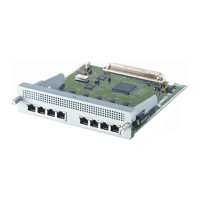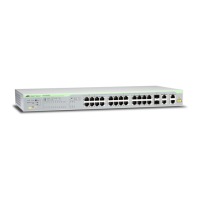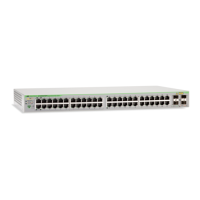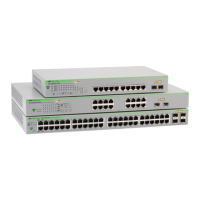Introduction Configuring UFO VLANs
Software Reference for SwitchBlade x3100 Series Switches (Layer Two Switching)
4-172
4.7.7 Configuring UFO VLANs
4.7.8 Default Configuration
•
As a default, there is one VLAN (vid 1), which cannot be created or destroyed.
• The default VLAN is associated with all Line Card interfaces.
• The default VLAN is in standard (non-UFO) mode.
4.7.9 Configuration Guidelines
•
The UFO mode is controlled on a VLAN basis.
• For the SBx3112, up to 16 VLANs can be configured in UFO mode, and they can use any VID in the 2-4094
range.
• When all VLANs on a port are deleted, the port would revert to the default VLAN (vid 1), which would be
in either UFO or Standard mode.
• An interface may be set as the upstream interface (either statically or dynamically) for a UFO VLAN regard-
less of its DIRECTION setting.
• LAG is not supported with UFO VLANs.
Once the ADD VLAN command for UFO has been invoked, the system may generate a warning message at the
user’s CLI session stating that classifier capacity or capabilities have been exceeded on the slot(s) impacted by
the provisioning change. The user should investigate classifier-related provisioning, such as IGMP, DHCPRELAY,
VLAN (for per-VLAN UFO and HVLAN), EPSR, INTERFACE (TAGALL option for HVLAN), ACCESSLIST, and
CLASSIFIER to determine the reason for the message.
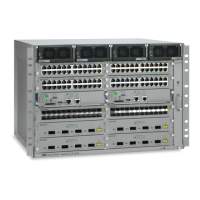
